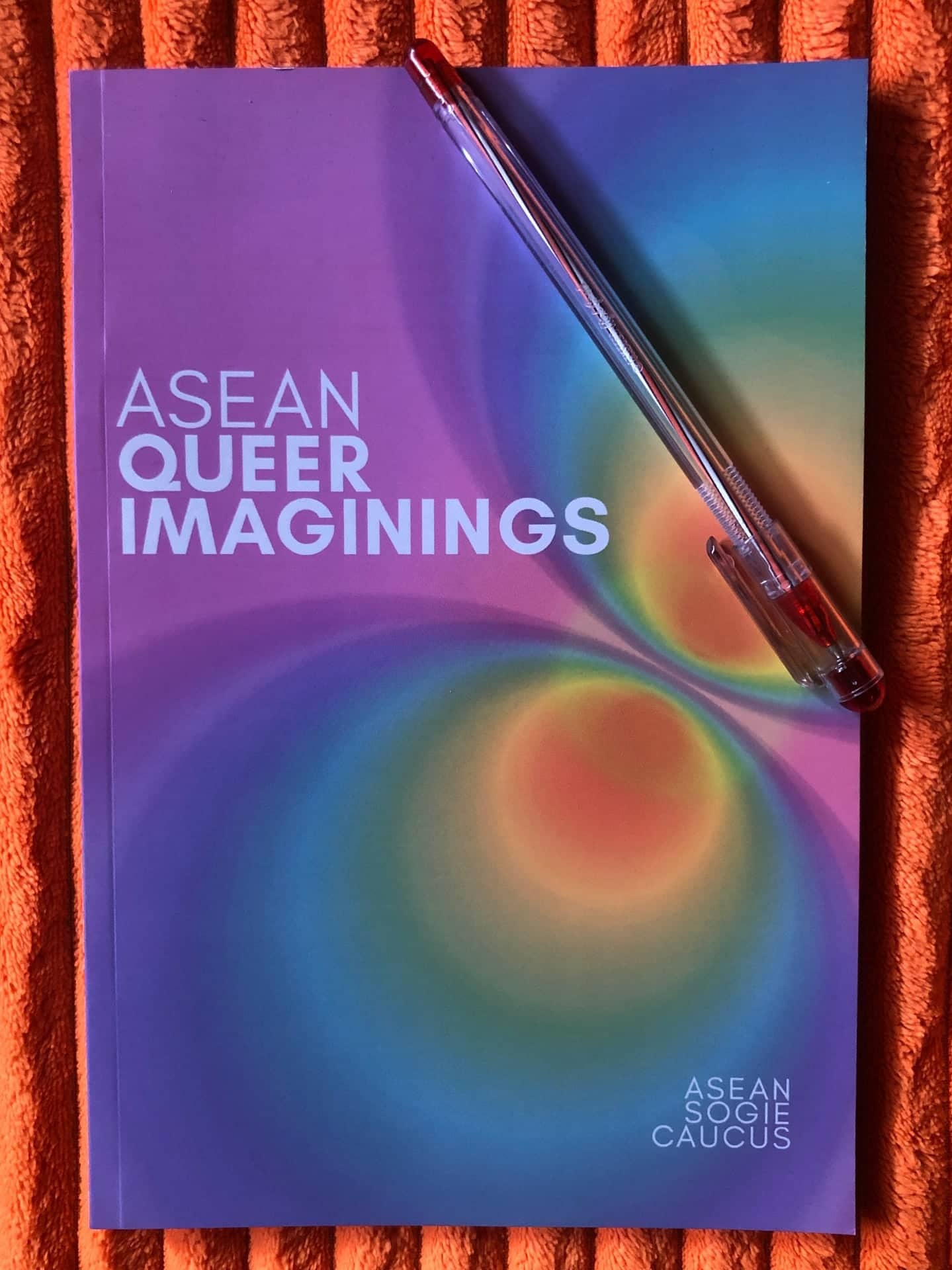Book Review: ASEAN Queer Imaginings: Collection of Writings by LGBTIQ Thinkers

ASEAN Queer imaginings is a collection of opinion pieces by LGBTQIA activists in SEA, as they articulate their hopes of a more inclusive ASEAN region. Through their writing and their work, these writers and activists navigate the diverse lived experiences of LGBTQIA activism in ASEAN. Their activism is one fraught with difficulty, but also imbued with much hope and optimism. The collection of pieces also illuminate the diverse identities, experiences and activism of LGBTQIA SEA folks. There is no one all encompassing, monolithic identity, but a tapestry of kaleidoscopic voices and people.
In particular, I found An's Imagining a Queer Memory Collective (which began the collection) incredibly insightful in shedding light on the ways an archive can resist the confines of heteronormativity to become an expansive space where queerness can reside, inhabit, and even proliferate in its variant forms and materiality. An begins by tracing the etymology of the word "archive", noting that it comes from the Greek word arkheion, which means "a house, a domicile, an address, the residence of superior magistrates, the archons, those who commanded". Archives classify information and to an extent, capture and sort memories too. However, as An rightly notes, archives' "usage of memories often [serve] the interest of nations, empires, capitalism, and institutions, rather than communities" (18) in the ways in which the organising principle is ordered in a certain way. By examining two community art projects initiated by Nhung Dinh, a queer artist, curator and activist based in Hanoi, An seeks to reimagine a queer memory collective as a resistance against the archive as we know it, and open up "different modes of sharing knowledge outside the language of legitimacy and officiality".
Nhung Dinh's queer museum espouses the spirit of participation and community, inviting people to bring their objects, create art, chill, share experiences and stories, and inhabit the space in ways they are comfortable with. Unlike a static collection in a museum or archive, the queer memory collective allows for interplay of elements, interaction of people and objects, espouses "some level of sociality...that refuses to be boxed in, neither fully domestic nor public". A site for exploration, openness, community - that was the sense I got while reading An's account of Nhung Dinh's queer museum.
Though concise, I've glimpsed into the possibilities of reimagining the archive as a space for possibilities beyond a totalising state narrative, of the archive as possessing the potential to be a queer space/site/place for queer histories and experiences be shown, be known, and flourish. This glimmer of hope that begins ASEAN Queer Imaginings is necessary, vital even, in today's social clime where queer history and experience have been misrepresented or underrepresented, swept under the proverbial carpet. It gave me hope that someday there may be a queer memory collective to seed, take root and sprout.
Lisabelle
Lisabelle Tan works in strategic planning and research in the library and information field in Singapore. Her poetry has been showcased at The Arts House (2016), and published in NUS Margins (2018), Crossings by NUS Museum (2019), and The Kindling (2020). She writes because she must.
*To read digital book, you can find it here https://aseansogiecaucus.org/news/asc-news/160-asean-queer-imaginings-collection-of-writings-by-lgbtiq-thinkers , if you are base in Indonesia or Philippine and wish to get the hardcopy please send your query to This email address is being protected from spambots. You need JavaScript enabled to view it.
